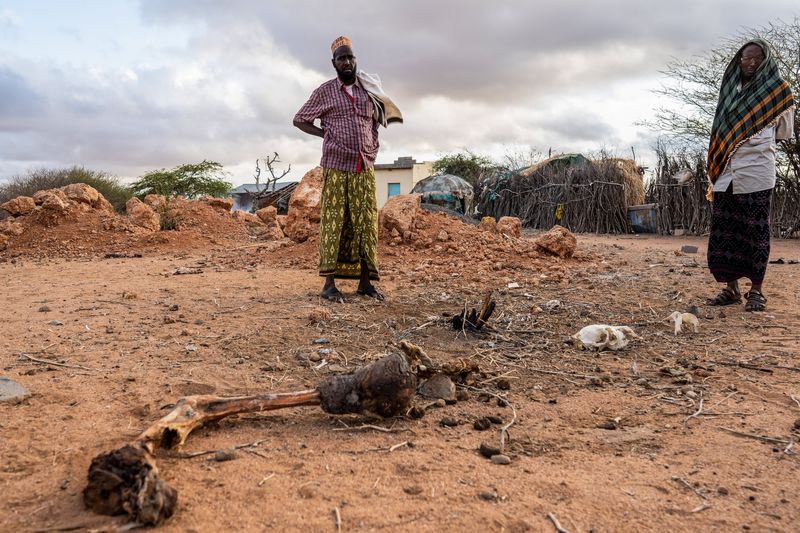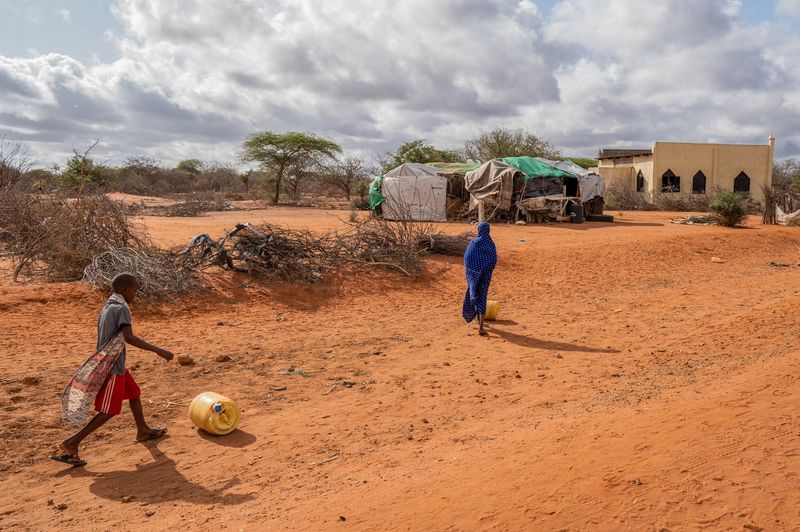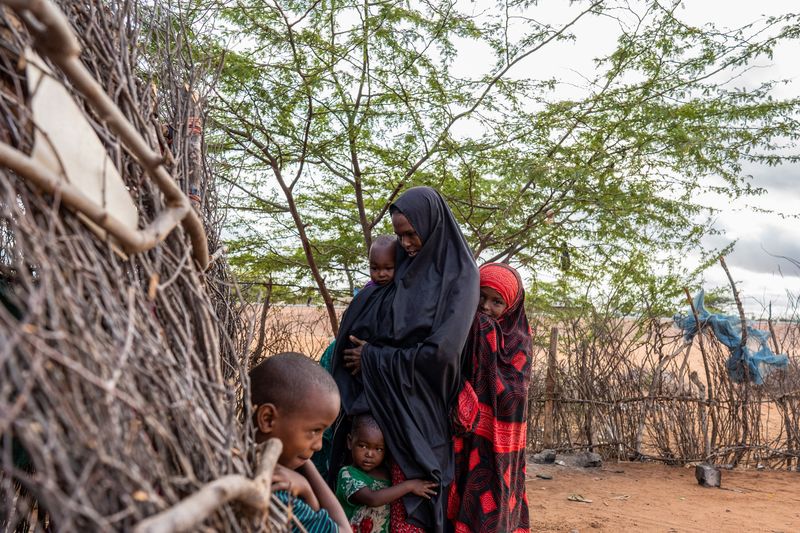
Drought Ravaging East Africa Bankrupts Farmers, Empties Schools
At least 16 million people are food insecure in the Horn of Africa.
Source: Bloomberg
Bloated livestock carcasses and sun-bleached bones litter the parched landscape around Garissa in eastern Kenya, the epicenter of a humanitarian and environmental crisis that’s unfolding across the Horn of Africa.
The worst drought in at least four decades and sweltering temperatures have depleted the area’s rivers and dams, driven thousands of destitute farmers from their lands and left those that remain reliant on pumps, boreholes and trucked-in water supplies. School attendance has plummeted and children as young as six are sent to get water, rolling yellow plastic drums for miles to collection points.

Photographer: Simon Marks/Bloomberg
Aden Olow is among those who’ve been forced from their homes. After losing his 20th goat to the drought in late February, he set off from his village of Nunow near Garissa with the remains of his small herd in search of grazing in neighboring Somalia, leaving his wife Mumina Mohammed to look after their nine children. She’s had to borrow money from local store owners to support the family.
“It’s a very heavy responsibility to raise all these children alone. All of them need food and it’s very stressful,” Mohammed, 30, said in an interview. “Whenever there is rain, I’ll expect my husband will come back.”
The Intergovernmental Panel on Climate Change has warned that global warming, caused by greenhouse gas emissions, is leading to more extreme weather events and African nations are among those that will face heightened food and water insecurity. At least 16 million people are already at risk across Kenya, Ethiopia and Somalia, according to the United Nations, and the threat of famine is clearly evident.

Photographer: Simon Marks/Bloomberg
While Kenya typically gets most of its rainfall between March and June and some showers between October and December, weather patterns have begun to change. Many areas haven’t had sufficient water since late 2020, and there is no indication when the drought will break.
Cereal production across northern Kenya and southern Somalia halved last year, and many cattle, goat and camel herds were decimated. Russia’s war on Ukraine has made a terrible situation even worse, pushing up grain and fuel prices, and raising aid costs for governments whose coffers had already been depleted by the coronavirus pandemic.
Feature image: Community leader Mohammed Dawud inspects the remains of his camel that he lost to a drought in the village of Nunow, Kenya.Photographer: Simon Marks/Bloomberg
